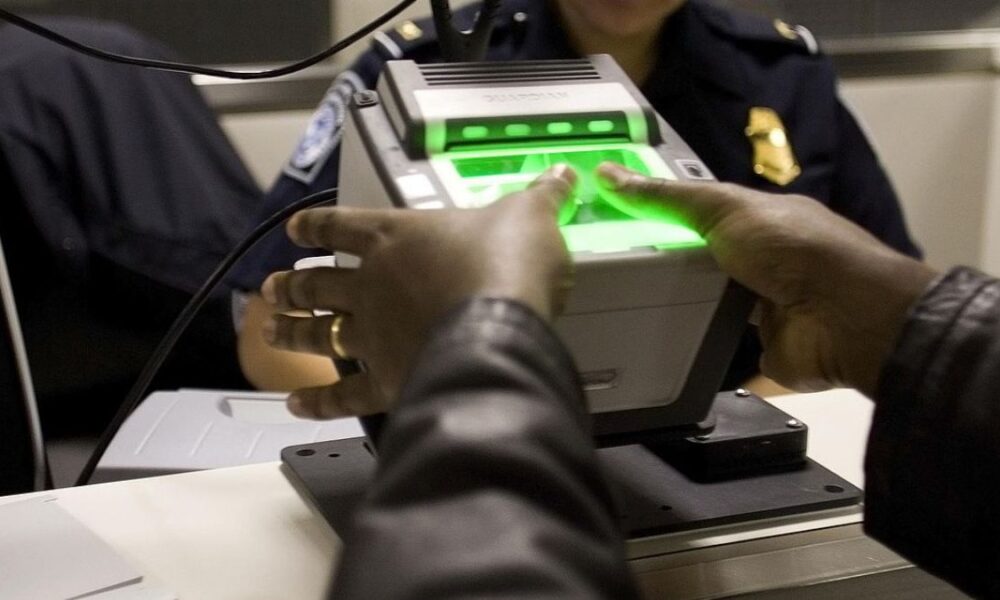Advancements in biometric identification technologies are rapidly transforming the security landscape. Among these innovations, multimodal biometric systems are emerging as a game-changing solution, offering a combination of high accuracy, enhanced security, and adaptability in diverse scenarios. But what exactly are multimodal biometric identification technologies, and how are they reshaping the security sector?
This post dives into the concept of multimodal biometrics, their advantages, and their key applications. Whether you’re a security professional or simply curious about cutting-edge technology, you’ll come away with a deeper understanding of why these systems are becoming integral to modern security infrastructures.
What Are Multimodal Biometric Identification Technologies?
Biometric identification systems use unique physical or behavioral characteristics—like fingerprints, facial features, voice, or iris patterns—to verify an individual’s identity. Multimodal systems, unlike unimodal ones, leverage two or more biometric modalities simultaneously to confirm identification. For example, instead of relying only on a facial recognition scan, a multimodal system might combine it with fingerprint data for added security.
Why Multimodal Systems Are Different
Unimodal biometric systems, such as basic fingerprint or facial recognition, are often adequate for general identification purposes. However, they have limitations:
- Vulnerability to errors: Unimodal systems are prone to higher rates of false acceptance (mistaking the wrong person as the right one) or false rejection (failing to identify the correct individual).
- Limited usability: Environmental conditions, like poor lighting or a wet fingerprint, can compromise their effectiveness.
- Susceptibility to fraud: A single mode can be more easily spoofed, such as using a high-quality photograph to trick a facial recognition system.
Multimodal systems overcome these drawbacks by combining data from multiple sources. This integration significantly enhances the system’s ability to identify individuals with unparalleled accuracy, even under challenging conditions.
Why the Security Sector Needs Multimodal Biometrics
The demand for robust and reliable security solutions has never been higher. Here’s why multimodal biometric systems are perfectly aligned with the security sector’s needs:
1. Enhanced Identification Accuracy
By incorporating multiple biometric modalities, multimodal systems achieve significantly higher recognition accuracy. For example, even if a person’s iris scan fails due to poor image quality, their fingerprint data might still successfully verify their identity. The redundancy built into the system minimizes errors and maximizes reliability.
Case in Point: Many international airports, such as London Heathrow and Dubai International, use multimodal biometrics (a combination of facial recognition and fingerprints) at border control to ensure travelers’ identities are verified accurately and efficiently.
2. Improved Resistance to Spoofing and Fraud
Fraudsters often attempt to bypass biometric systems using fake prints, photos, or voice distortions. Multimodal systems, however, are far less vulnerable because they require matching across multiple biometric traits. Manipulating two or more modalities simultaneously is exponentially more difficult, fortifying the system against potential breaches.
Example: Banks and financial institutions are increasingly turning to multimodal biometrics to secure customer accounts. Combining voice verification with facial recognition, for instance, creates a robust defense against identity theft in digital banking.
3. Resilience in Real-World Conditions
Unimodal systems often fail in less-than-ideal scenarios. A face scanner might struggle in low lighting, while sweaty hands might compromise a fingerprint reader. Multimodal systems intelligently combine inputs to mitigate these issues, ensuring functionality even under challenging environmental conditions.
Practical Application: Law enforcement agencies deploying mobile devices with multimodal authentication can verify identities in various scenarios—whether it’s during a roadside stop at night or a crowded checkpoint under fluctuating weather conditions.
4. Scalable Solution for Complex Security Needs
The versatility of multimodal biometrics makes them suitable for both large-scale operations and smaller, tailored setups. This scalability ensures they can be integrated into diverse environments, from national e-ID programs to private corporate campuses.
Key Statistics: Governments implementing national ID systems in countries like India (Aadhaar) and Estonia use multimodal biometrics to register millions of citizens, balancing scale with reliability.
Applications of Multimodal Biometrics in the Security Sector
Multimodal biometric systems are finding applications across a broad spectrum of industries and sectors. Here are some of the most impactful use cases:
1. Border Security and Immigration
Border control is one of the most critical areas for multimodal biometric applications. By combining facial recognition, iris scans, and fingerprint data, authorities can efficiently verify travelers’ identities while minimizing delays. This ensures that only authorized individuals can pass through.
Real-Life Example: The European Union is rolling out its Entry/Exit System, which uses multimodal biometrics to register non-EU travelers at border checkpoints, enhancing seamless flow and security.
2. Law Enforcement
Law enforcement agencies use multimodal biometric tools for criminal identification and suspect tracking. For instance, a combined facial and fingerprint scan can help confirm the identity of a suspect in custody, reducing reliance on outdated manual matching processes.
Advancement Highlight: Portable, multimodal biometric devices are empowering police forces to perform identity verification in the field, enhancing operational efficiency and accuracy.
3. Access Control for Sensitive Locations
Organizations managing sensitive facilities, such as data centers, laboratories, and military bases, are integrating multimodal biometrics for enhanced access control. Requiring two or more biometric traits ensures only authorized individuals can enter restricted areas.
Example: Multimodal identity verification systems are standard at nuclear power plants and government research labs to safeguard critical infrastructure.
4. Digital Authentication
With the rise in cybercrime, digital platforms are adopting multimodal biometrics for secure logins and transactions. Requiring both a voiceprint and a facial scan ensures added layers of authentication for digital platforms from banking apps to government portals.
Statistic to Note: According to a report from Grand View Research, the global biometric system market is projected to reach $68.6 billion by 2030, driven by the adoption of biometric technologies in cybersecurity.
5. Aviation and Public Transportation
Airports and metro systems are implementing multimodal biometrics to enhance passenger experiences while maintaining stringent security protocols. By combining facial and fingerprint data, these systems facilitate faster check-ins and boarding for travelers.
Notable Example: Singapore’s Changi Airport uses multimodal systems to streamline passenger verification, offering a balance of security and convenience.
Challenges and Considerations in Using Multimodal Biometrics
Despite their impressive capabilities, implementing multimodal biometric systems comes with challenges that organizations must address:
- High Implementation Costs: Multimodal systems often require advanced hardware and software, making them an expensive investment for small-scale organizations.
- Data Privacy Concerns: Collecting and storing multiple biometric traits raises concerns about data misuse and privacy breaches. It’s crucial to ensure robust encryption and data protection mechanisms are in place.
- Ethical Considerations: The potential for misuse and surveillance abuse by authoritarian entities is an ongoing debate. Clear policies and ethical standards are essential to prevent overreach.
- Interoperability Issues: With various vendors offering different solutions, integrating multimodal systems into existing infrastructures can be complex.
By addressing these challenges proactively, the security sector can fully realize the potential of multimodal technologies while ensuring their ethical and responsible use.
Unlocking the Future of Security with Multimodal Biometrics
Multimodal biometric identification technologies are more than just a trend—they represent the future of secure and reliable identification systems. Their ability to enhance accuracy, resist spoofing, and perform under diverse conditions makes them a vital tool in the security sector’s arsenal.
Organizations must act strategically to integrate these systems into their security processes, keeping scalability, ethics, and cost-efficiency in mind. By doing so, they’ll not only safeguard their operations but also build trust among their stakeholders.
For businesses and government agencies looking to stay ahead, multimodal biometrics aren’t just an option—they’re becoming a necessity.
.










